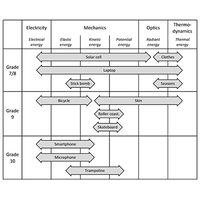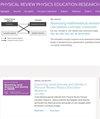为物理课堂和远程学习设计电子学习课程:学习任务的作用
IF 3.6
2区 教育学
Q1 EDUCATION & EDUCATIONAL RESEARCH
Physical Review Physics Education Research
Pub Date : 2024-02-16
DOI:10.1103/physrevphyseducres.20.010107
引用次数: 0
摘要
数字学习技术在物理教育中的重要性与日俱增,部分原因是 COVID-19 大流行。在大流行期间,即使学校关闭,数字技术也能继续为学生提供教学。虽然心理学和教育技术方面的研究对电子学习课程的有效性提出了许多见解,但对电子学习课程设计的研究却较少。很少有研究对作为电子学习课程核心要素的学习任务设计进行实证调查。本研究分析了电子学习课程中的任务设计,特别是任务的开放程度及其情境的相关性,是如何影响学生的行为参与、学习成果和情境兴趣的。由于电子学习课程在 COVID-19 大流行期间的重要性,我们还分析了特定学习环境(课堂学习、远程学习)对电子学习课程设计对学生行为参与、学习成果和情境兴趣的影响程度。为了探究研究问题,我们分析了 12 门不同电子学习课程(3 至 5 课时,初中物理)的数据集(N=1060),其中 n=557 是在 COVID-19 大流行之前完成的,n=503 是在 COVID-19 大流行期间完成的。结果表明,与有意义的现实世界背景相关的学习任务比例较高的电子学习课程似乎更有利于提高行为参与度、学习成果和情境兴趣。关于开放式任务的考虑,结果表明这些任务似乎对课堂学习更有用,但在设计远程教育电子学习课程时应有限度地使用。本文章由计算机程序翻译,如有差异,请以英文原文为准。

Designing e-learning courses for classroom and distance learning in physics: The role of learning tasks
Digital learning technologies have grown increasingly important in physics education, partly enforced through the COVID-19 pandemic. During the pandemic, digital technologies allowed for continued teaching and learning of students even when schools were closed. While research in psychology and educational technology has yielded many insights into the effectiveness of e-learning courses, fewer studies have examined the design of e-learning courses. Few studies have empirically investigated the design of learning tasks as a central element of e-learning courses. The present study analyzes how the design of tasks in e-learning courses, specifically with respect to their degree of openness as well as the relevance of their contexts, influences students’ behavioral engagement, learning outcomes, and situational interest. Due to the importance of e-learning courses during the COVID-19 pandemic, we also analyzed the extent to which specific learning settings (classroom learning, distance learning) influence the effects of e-learning course design on students’ behavioral engagement, learning outcomes, and situational interest. To investigate the research questions, we analyzed a total of datasets for 12 different e-learning courses (3 to 5 lessons, middle school physics), of which were completed before and during the COVID-19 pandemic. The results suggest that e-learning courses with a high proportion of learning tasks that relate to meaningful real-world contexts appear to be more conducive to behavioral engagement, learning outcomes, and situational interest. Regarding the consideration of open-ended tasks, the results suggest that these appear to be more useful for classroom learning but should be used in a limited way when designing e-learning courses for distance education.
求助全文
通过发布文献求助,成功后即可免费获取论文全文。
去求助
来源期刊

Physical Review Physics Education Research
Social Sciences-Education
CiteScore
5.70
自引率
41.90%
发文量
84
审稿时长
32 weeks
期刊介绍:
PRPER covers all educational levels, from elementary through graduate education. All topics in experimental and theoretical physics education research are accepted, including, but not limited to:
Educational policy
Instructional strategies, and materials development
Research methodology
Epistemology, attitudes, and beliefs
Learning environment
Scientific reasoning and problem solving
Diversity and inclusion
Learning theory
Student participation
Faculty and teacher professional development
 求助内容:
求助内容: 应助结果提醒方式:
应助结果提醒方式:


